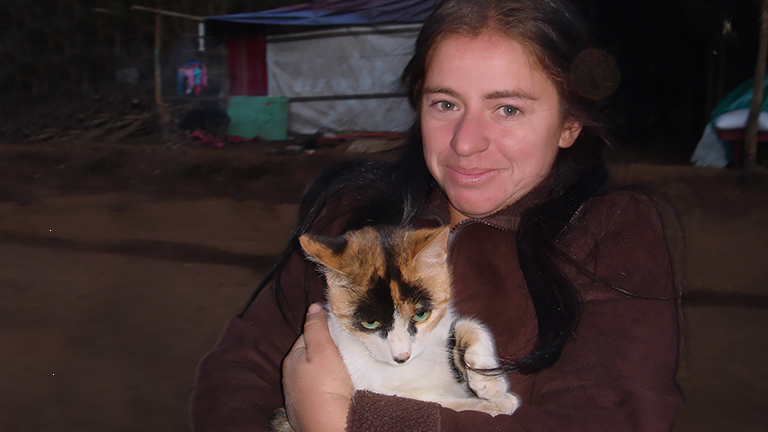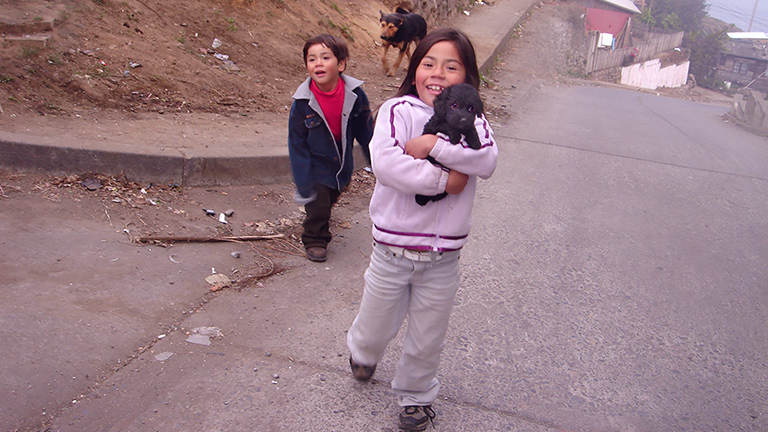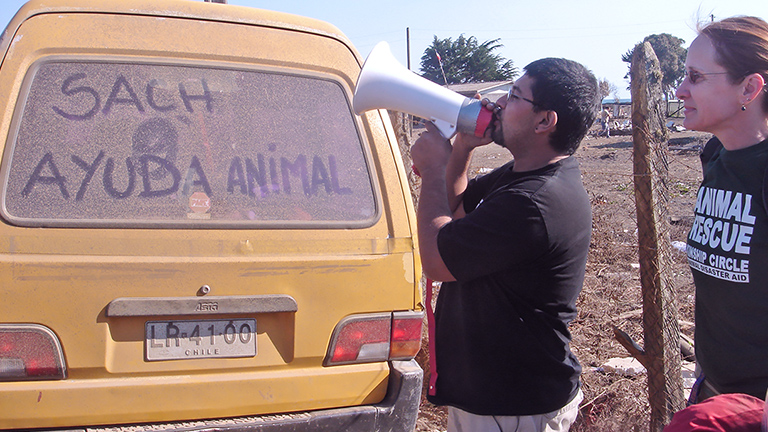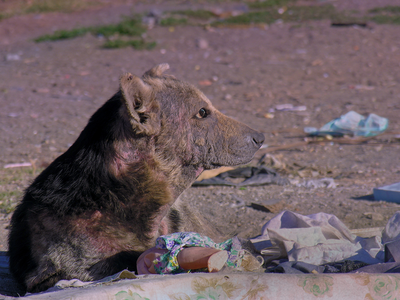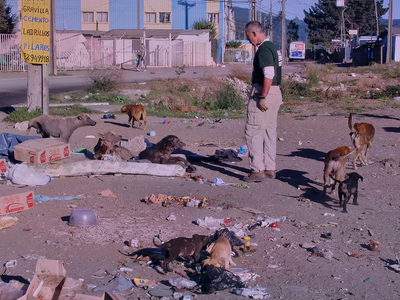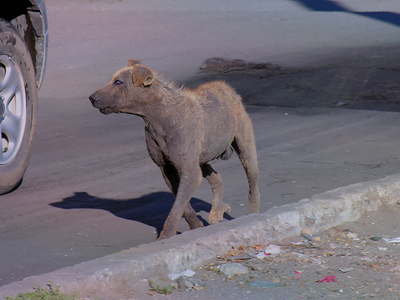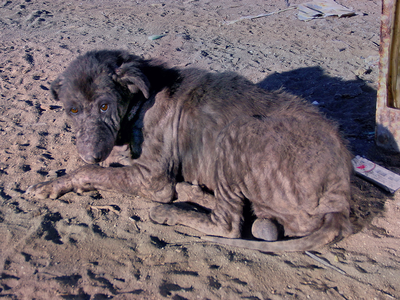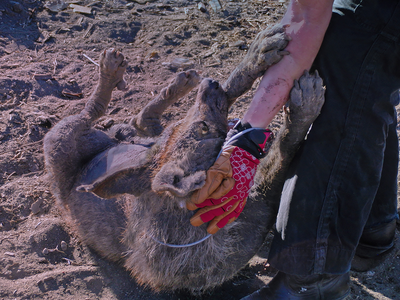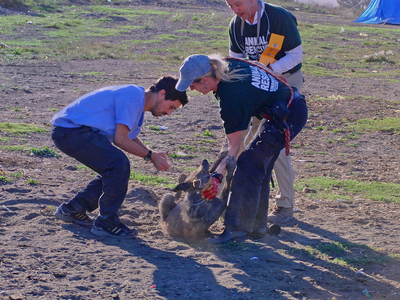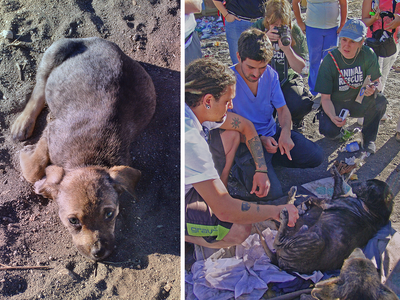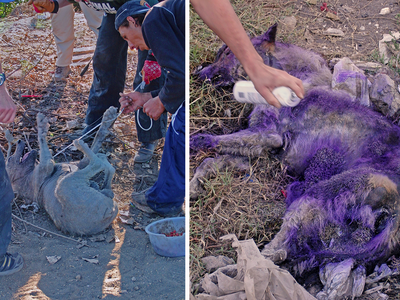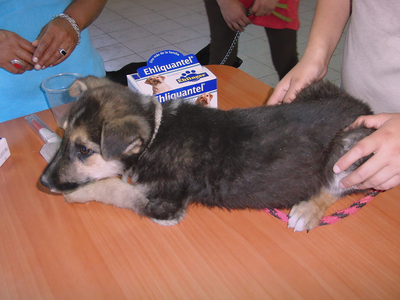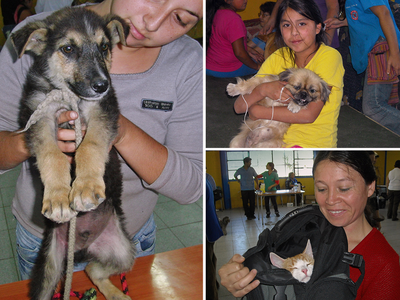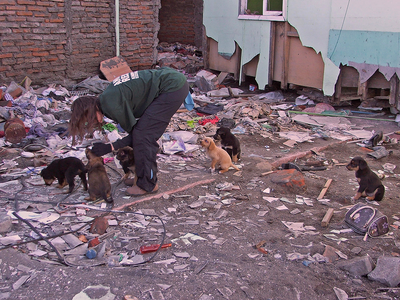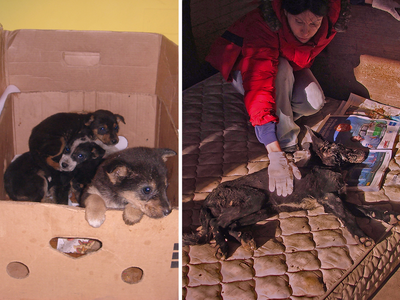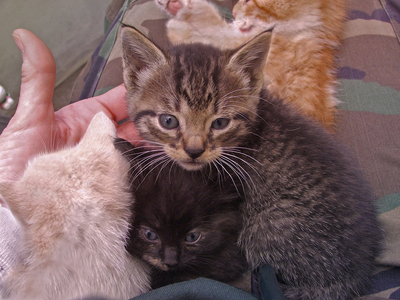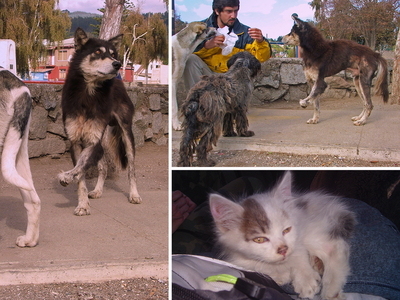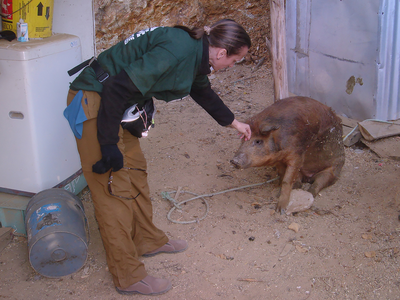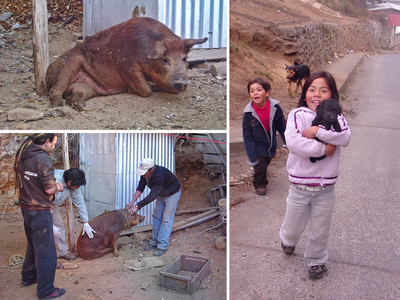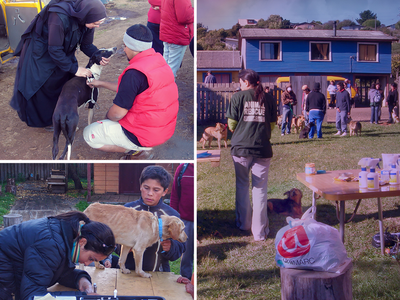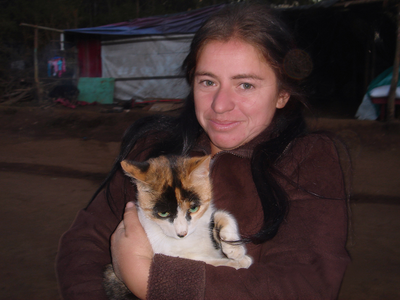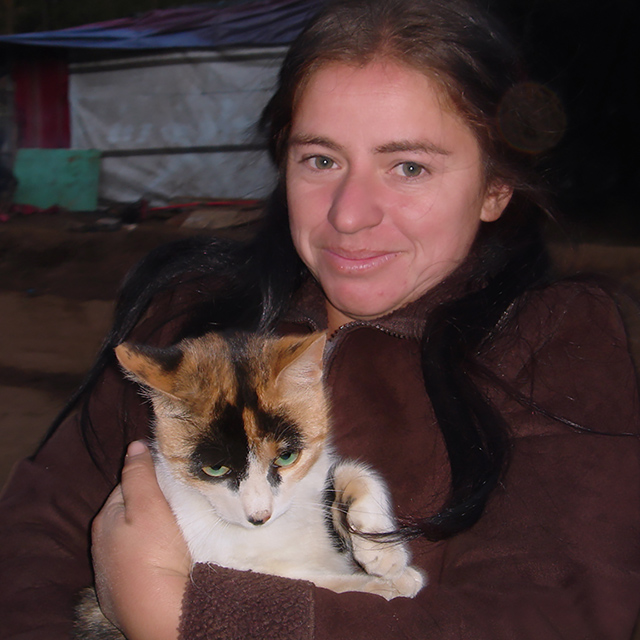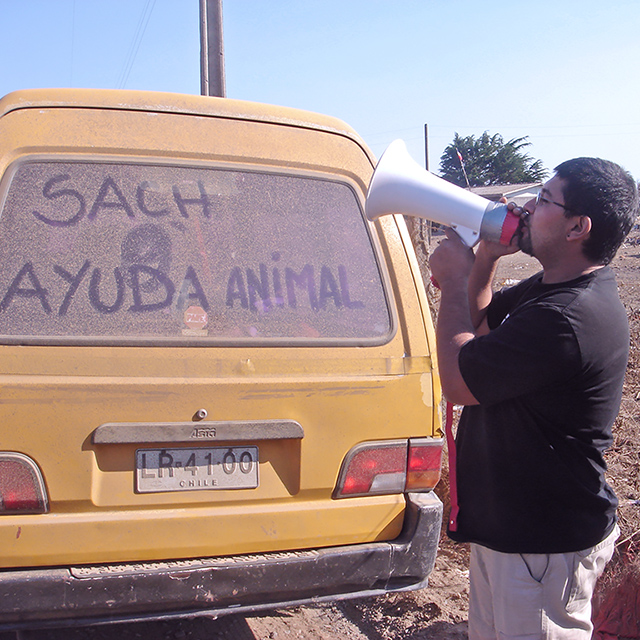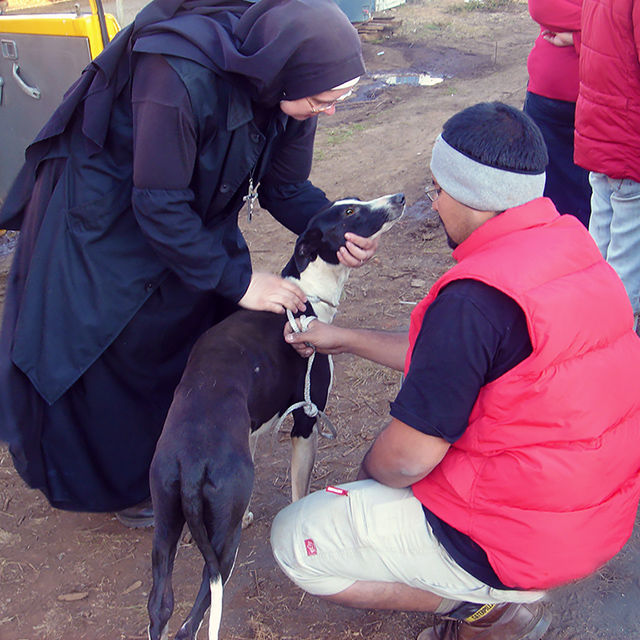LocationSouthern Chile Villages: Quidico, Tirua, Llico
Field LogCheri Deatsch, PIO Apr 23-24 2010
New Quake Rattles Concepcion. We rise at 6:00 for a long drive to southern Chile. While packing gear, a 6.1 earthquake strikes Concepcion. The house shakes items off shelves. The ground curves and waves beneath our feet. Courtney Chandel, Kinship's safety officer, orders everyone out of the house. Cesar Sanchez (SACH) joins us a few moments later, mostly concerned about our reaction to the quake. Apparently Chileans are accustomed to shifting earth plates. We still manage to depart early enough to avoid a traffic lock on the sole bridge that runs across the Bio Bio River in Concepcion. At rush hour, Concepcion implements a type of contraflow. In the morning, three lanes enter the city while just one exits. At the bridge, we see some of Concepcion's worst quake damage: An apartment building literally cracked in half. Of its 100 occupants, only eight died. At the top of the hill we find an enclave of tents and roughly 12 dogs. Two have gaping wounds that vets treat with anti-parasitic/bacterial spray. We leave the displaced people with bags of dog food. We are warned to stay close together when navigating the next hill on foot in an area home to thieves. We walk deep into Chile's most impoverished region, past fields with sheep, pigs, a few horses, and many cows. These large outdoor animals appear in good condition. This part of southern Chile is the land of the Mapuche (land people), indigenous tribes engaged in a land struggle with the government.
QUIDICO & TIRUAFive hours later, we arrive in the village of Quidico and let townspeople know we'll return in one hour to treat animals. We proceed to Tirua, another caleta ravaged in the tsunami. Homes, restaurants and a boarding schools are erased. We see evidence of the 20-30 meter wave on a nearby hill. Trees coated in saltwater are tangled and dying. A car is stranded in the bay. Rodrigo, a SACH vet here when the quake hit, says casualties are few because the “wise grandfathers” warned families to take refuge in the hills. Three dogs trail us along the pier. We speak to the village president. Upon return to Quidico, 35-40 dogs and their caregivers line a dirt road in wait for vet care. Our exam table is a door-sized board laid over two sawhorses. We conduct exams, de-wormings and flea sprays in a yard. Each animal gets a blue SACH collar with his/her name. Cases range from bite wounds and arthritis to eye problems, kennel cough, mange and other conditions. During the clinic, a couple arrives with a black lab in a wheelbarrow. At first the dog seems frightened by the chaos. Then her front leg is lifted to reveal a 20-cm laceration on her stomach/groin area. Rodrigo and Shiry, two of the vets, wheel the dog back to the couple's house to suture his wounds. Despite a lack of supplies, the veterinarians close the wound with non-disposable sutures and local anesthesia. They provide antibiotics and promise to contact a nurse in the area to later remove the sutures. No veterinary services are available anywhere in this region. We treat about 100 dogs and cats. Dogs, who don't ordinarily where collars or leashes here, are guided in with belts looped around their necks. Smaller dogs and cats are bundled in sugar sacks. One cat shows up in a small birdcage. Hours, plus one dog fight later, all caregiven and stray animals are treated. On the way out of town, we stop to examine a steer with an eye tumor. He suffers from a carcinoma, common in farmed animals with white faces, that calls for ongoing treatment over a long period — a commitment the farmer is unlikely to make. Otherwise, the steer is in good shape and the farmer will probably continue to work the animal without treatment, due to lack of veterinary care here.
LLICOThat night, we sleep at a shabby school in Llico, another tsunami ruined caleta. Though we arrive near midnight, the school's caretaker greets us at the door. The school is only blocks from the sea. Yesterday's strong aftershock prompts Cesar to warn that a tsunami could overtake the school. We plan to drive quickly to high ground in the event of an earthquake. On that note, we settle in for the night. The next morning in Llico, we encounter a celebratory scene. National radio and local TV are present to donate two boats to replace vessels lost in the wave. The KC/SACH team is to be interviewed after the boat gift ceremony. As we wait, the team surveys damage to the town. It rivals New Orleans' most devastated areas following Katrina. An entire neighborhood is wiped out. Only home foundations remain. Ox carts facilitate cleanup at one home. We feel as if we've stepped back in time. On the way back to Concepcion we stop at a roadside farm to treat dogs and a cat for parasites. We also find scrappy brown pigs, weak from hunger and trichinosis. “Pig Whisperer” Cheri Deatsch (who also helped corral terrified pigs from Iowa floodwaters in the U.S.) reaches out to comfort the frightened animals as SACH vets treat them for trichinosis.
